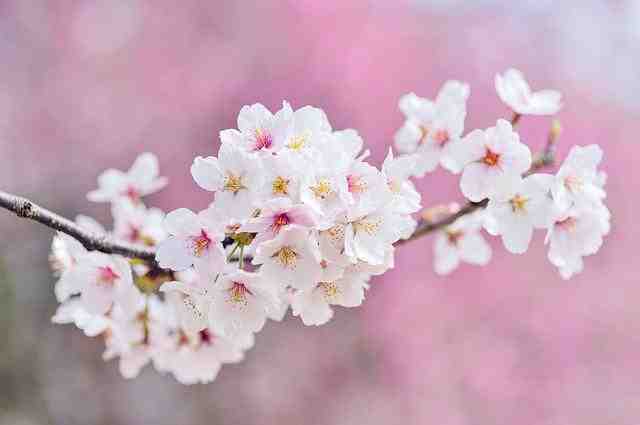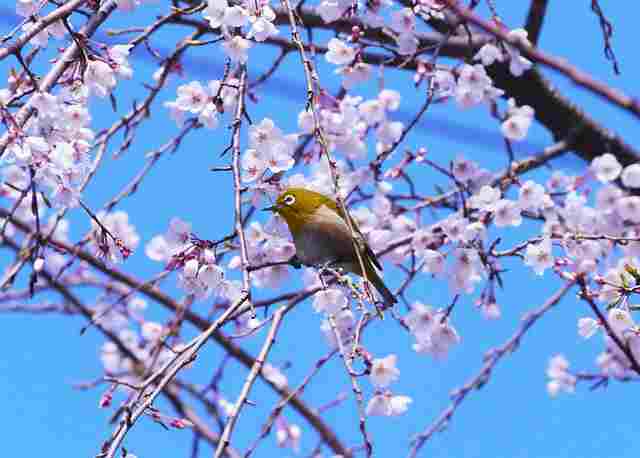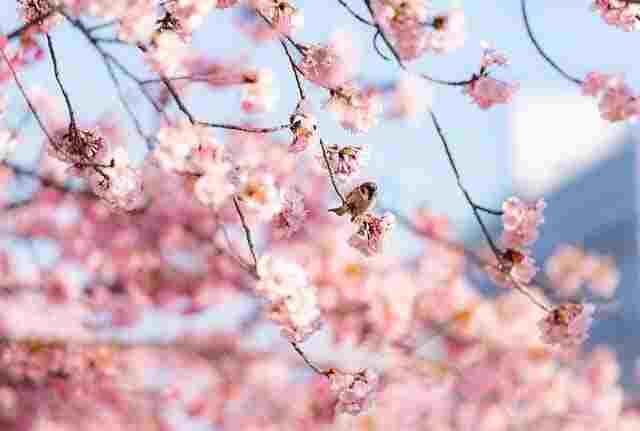Cherry blossoms prophetic meaning tells us that even when things are hard, there is still room for growth and change. Also, cherry blossoms stand for hope, love, and the fact that life goes in cycles; their yearly bloom is a sign of rebirth.
Cherry blossoms, with their delicate and ethereal beauty, have captured the hearts and imaginations of human beings across cultures for centuries. Beyond their aesthetic appeal, those amazing plants maintain a profound and prophetic meaning that transcends borders and time. In this complete article, we will delve deep into the symbolism, significance, and religious insights related to cherry blossoms. We’ll discover their symbolic representations of rebirth, renewal, new beginnings, and the temporary nature of existence. Moreover, we’ll uncover the spiritual and prophetic dimensions of cherry blossoms, dropping mild on their role as symbols of wish, amour, and even reincarnation. Join us in this adventure via the aromatic international of cherry blossoms as we find their hidden messages.
Cherry Blossoms: Nature’s Overture to Spring
Aesthetic Beauty and Cultural Significance
Cherry blossoms, scientifically called Prunus serrulata, are famend for their fascinating look. These delicate crimson or white petals, organized in clusters, create a enthralling sight when in complete bloom. It’s no surprise that they have got emerge as synonymous with the appearance of spring in diverse components of the sector.
The spell binding allure of cherry blossoms has no longer most effective captivated the admirers of herbal beauty but has additionally observed its place in the cultural and inventive expressions of many societies. In Japan, the cherry blossom season, referred to as “Sakura,” is a time of birthday celebration, marked by means of Hanami gala’s, in the course of which people collect to admire and picnic beneath the blossoming timber. The petals, once they fall, create a poetic spectacle, corresponding to a mild blizzard, symbolizing the brief and ephemeral nature of life.
Symbolism Across Cultures
Cherry blossoms are not constrained to Japan; their symbolism transcends borders and cultures. In many Asian nations, those blooms characterize purity, beauty, and the appearance of spring. In China, as an instance, cherry blossoms are related to female splendor and love.
In Western cultures, cherry blossoms are frequently linked to the concept of rebirth, renewal, and new beginnings. They signal the stop of wintry weather’s harshness and the emergence of a vibrant and colourful spring. As the trees shed their old, barren branches and burst forth with clean blooms, it serves as a effective reminder that lifestyles, too, has its cycles of rejuvenation.
What is the prophetic meaning of cherries?

Beyond Aesthetic Beauty
While the cultured enchantment of cherry blossoms is simple, their prophetic meaning runs deeper, tapping into widespread subject matters that resonate with the human spirit. Let’s explore the profound symbolism and importance that cherry blossoms keep.
1. Rebirth and Renewal
One of the core prophetic meanings of cherry blossoms is the idea of rebirth and renewal. As winter’s grip loosens and spring strategies, the barren bushes of the previous season suddenly burst into lifestyles with the blossoming of cherry plants. This transformation mirrors the human revel in of emerging from difficult instances and finding new wish and power.
In a spiritual context, cherry blossoms remind us that even in our darkest moments, there is the capacity for boom and transformation. They characterize that after each harsh wintry weather in our lives, there will be a spring of renewal waiting to bloom.

2. New Beginnings
Cherry blossoms are also emblematic of new beginnings. The arrival of spring indicates the start of a brand new cycle in nature, where lifestyles awakens from its shut eye. In the identical manner, cherry blossoms encourage us to embody sparkling starts and opportunities. They serve as a reminder that we have the electricity to shed our beyond and embark on new journeys, unencumbered through preceding boundaries.

3. The Fleeting Nature of Life
The brief beauty of cherry blossoms, as they bloom for a quick duration earlier than lightly falling to the floor, symbolizes the ephemeral nature of existence itself. This component of cherry blossoms encourages us to appreciate the splendor and preciousness of the present second. It reminds us that lifestyles is fleeting, and we should make the maximum of the time we have.

4. Symbol of Hope
Cherry blossoms are often seen as symbols of desire. Their arrival after a long and cold winter indicators the promise of heat and abundance inside the coming months. In instances of problem or despair, the sight of cherry blossoms can be a beacon of desire, a reminder that brighter days are ahead.
five. Amour and Connection
Beyond their affiliation with rebirth and renewal, cherry blossoms additionally maintain a unique area in matters of the heart. In some cultures, they characterize love and romance. The sensitive and soft beauty of these flora can evoke feelings of love and affection. In this feel, cherry blossoms function a image of amour, reminding us of the importance of affection and connection in our lives.
6. Sign of Reincarnation
In positive spiritual traditions, cherry blossoms are visible as a sign of reincarnation. The annual resurrection of the cherry blossoms in spring is believed to represent the cyclical nature of life and dying. Just because the trees shed their blossoms in iciness best to bloom again in spring, human souls may go through cycles of life and loss of life, every one bringing new opportunities for increase and evolution.
Spiritual Insights and Reflections
As we ponder the prophetic meaning of cherry blossoms, it will become obtrusive that these beautiful plant life have a whole lot to teach us approximately lifestyles, spirituality, and our area in the grand tapestry of lifestyles. Here are a few spiritual insights and reflections stimulated by using the symbolism of cherry blossoms:
Embracing Change
The cycle of cherry blossoms, from bud to complete bloom to gentle fall, reminds us that change is an inherent a part of life. Just as the bushes gracefully take delivery of the converting seasons, we can also discover ways to embrace exchange with grace and equanimity. Change brings growth and transformation, and cherry blossoms invite us to welcome it with open hearts.
Living within the Present
The fleeting splendor of cherry blossoms underscores the significance of dwelling in the gift second. Rather than living on the past or anxiously expecting the destiny, we can find contentment and success by means of absolutely experiencing and appreciating the prevailing. The blossoms function a gentle nudge to take pleasure in the right here and now.
Hope in Difficult Times
In times of adversity, the symbolism of cherry blossoms offers solace and desire. Just as spring follows iciness without fail, difficult instances are observed with the aid of periods of restoration and boom. The blossoms remind us that even inside the darkest of hours, there is usually the capability for a brighter tomorrow.
Love and Connection
Cherry blossoms, with their association with amour and romance, activate us to celebrate love and connection in our lives. They encourage us to express affection and appreciation for our cherished ones and to nurture the bonds that increase our life.
Rebirth and Transformation
The concept of rebirth and renewal embodied through cherry blossoms encourages us to include change and transformation as possibilities for personal increase. Like the timber dropping their antique blossoms and sprouting new ones, we can also shed proscribing ideals and behavior to turn out to be the fine versions of ourselves.
The Cycle of Life
Cherry blossoms as a image of reincarnation remind us of the cyclical nature of lifestyles and dying. This attitude can provide comfort and reassurance, particularly in instances of grief and loss. It suggests that loss of life isn’t an cease however a transition to a new phase of lifestyles.
Conclusion
Cherry blossoms, with their timeless beauty and profound symbolism, provide a prophetic message that resonates with people from all walks of life and across cultures. They remind us of the everlasting cycles of nature, the transient nature of existence, and the potential for rebirth and renewal. As symbols of wish, amour, and connection, cherry blossoms encourage us to embody lifestyles’s demanding situations and joys with grace and gratitude. Whether you encounter them at some point of a Hanami festival in Japan or to your very own outside, take a second to pause and mirror at the prophetic that means of cherry blossoms, and permit their splendor to nourish your soul and wake up your spirit.
